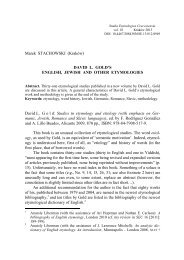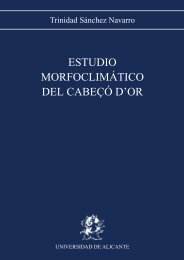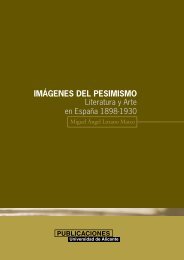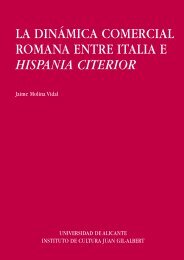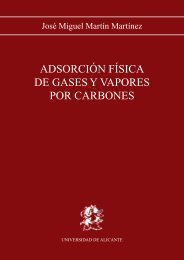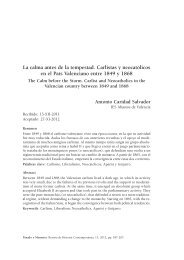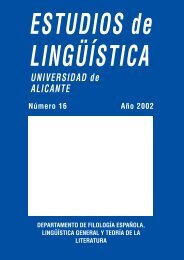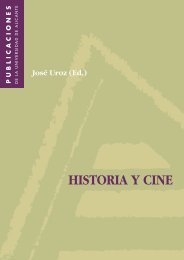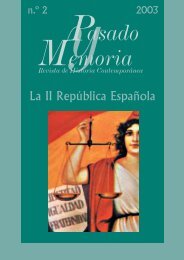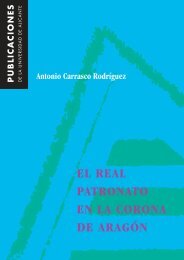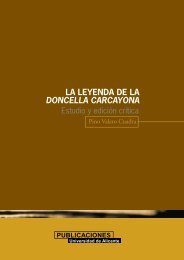English and Galician in the Middle Ages - Publicaciones ...
English and Galician in the Middle Ages - Publicaciones ...
English and Galician in the Middle Ages - Publicaciones ...
Create successful ePaper yourself
Turn your PDF publications into a flip-book with our unique Google optimized e-Paper software.
<strong>English</strong> <strong>and</strong> <strong>Galician</strong> <strong>in</strong> <strong>the</strong> <strong>Middle</strong> <strong>Ages</strong>:<br />
A Sociohistorical Survey<br />
Begoña Crespo García<br />
rustic language. Its doma<strong>in</strong> has been restricted for more than<br />
fi ve centuries to <strong>the</strong> rural speech community. <strong>Galician</strong> fell <strong>in</strong>to<br />
disuse outside rural circles <strong>and</strong> was <strong>in</strong> literary silence until<br />
<strong>the</strong> 19 th cen-tury with “O Rexurdimento”. This was partly due<br />
to <strong>the</strong> lack of <strong>in</strong>terest on <strong>the</strong> part of those Spanish speakers<br />
belong<strong>in</strong>g to <strong>the</strong> cultural <strong>and</strong> economic sectors of society. It<br />
was not until <strong>the</strong> 18 th century that scholars began to work on<br />
it (Mariño Paz, 1995).<br />
3. Diglossia <strong>and</strong> bil<strong>in</strong>gualism <strong>in</strong> both communities<br />
It has already been mentioned that <strong>the</strong> analysis of diglossia<br />
<strong>and</strong> bil<strong>in</strong>gualism complies with <strong>the</strong> sociol<strong>in</strong>guistic study of <strong>the</strong><br />
<strong>English</strong> <strong>and</strong> <strong>Galician</strong> speech communities <strong>in</strong> medieval times.<br />
As has been po<strong>in</strong>ted out, <strong>the</strong> alternate <strong>and</strong> conditioned use of<br />
two l<strong>in</strong>guistic codes by a speech community is present both<br />
<strong>in</strong> <strong>the</strong> history of <strong>English</strong> <strong>and</strong> <strong>Galician</strong>. Contacts with foreign<br />
tongues brought to <strong>the</strong>se territories by members of a prestigious<br />
rul<strong>in</strong>g class favoured <strong>the</strong> existence of <strong>the</strong> sociol<strong>in</strong>guistic<br />
phenomenon known as diglossia.<br />
The description of Medieval Engl<strong>and</strong> or <strong>Galician</strong> sociol<strong>in</strong>guistic<br />
panorama would be <strong>in</strong>complete without a reference to “<strong>the</strong><br />
alternate use of two or more languages” or to<br />
<strong>the</strong> coexistence of two languages with<strong>in</strong> <strong>the</strong> same language<br />
(speech) community, us<strong>in</strong>g <strong>the</strong>m <strong>in</strong> different communicative do-<br />
CONTENTS<br />
25



